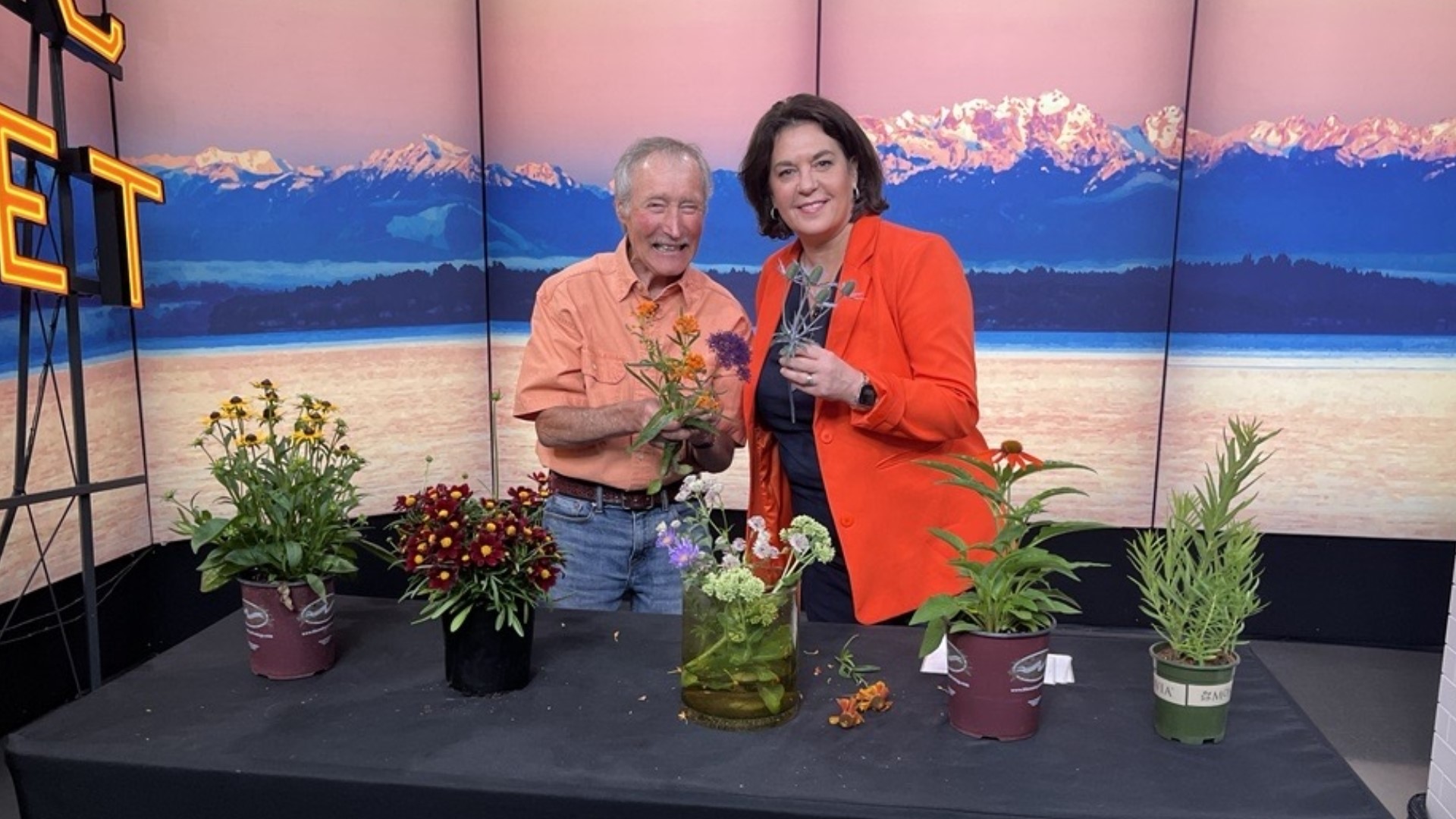SEATTLE — Attracting butterflies adds interest to your garden and kids love to watch these beautiful creatures flitting about the plants.
The first step is to find a sunny location that is sheltered from wind. Butterflies love to feed where it's warm and sunny, but they hate fighting the wind when they're trying to feed. Place a few flat stones in sunny, visible spots in your garden. Butterflies use the stones to rest on and warm themselves.
Give your butterflies a water hole by keeping a mud puddle constantly moist in a sunny spot, or place a bucket filled with constantly moist sand in your garden.
Avoid using pesticides. Even relatively benign products could have a devastating effect on your butterfly friends.
There are a lot of plants that provide nectar to feed adult butterflies, but I've found that coneflower (Echinacea), New England Aster (A. novae-angliae) marigolds, oregano, pincushion plant (Scabiosa) and butterfly bush (Buddleja) are some of their favorites.
Now keep an eye out. You might attract some unusual varieties to your garden.
Common butterflies in the Puget Sound Region:
Western Tiger Swallowtail (Papilio rutulus). Identification: Large. Yellow with black tiger stripes. Underside with some blue. Flight Period: mid April – late September, peak in June. Favorite Nectar Plants: mock orange, milkweeds, thistles, rhododendron, lilac, blackberry. Larval Host Plants: Native willows, quaking aspen and other poplars, red alder.
Painted Lady (Vanessa cardui) Identification: 3 inches, mottled orange and black, with white forewing bar. Four eyespots below. Flight Period: early April – early November, peaks in May, July, September. Favorite Nectar Plants: Dandelion, asters, thistles, clovers, many composite flowers. Larval Host Plants: Thistles, mallows, pearly everlasting.
Lorquin’s Admiral (Limenitislorquini) Identification: Unmistakable. Large, black with white bands and orange wing tips. Flight Period: mid February – early October, peaks in June-August. Favorite Nectar Plants: Dogbane, yarrow, thistle, and others, although not always common at flowers. Larval Host Plants: Native willows, poplars, ocean spray.
Woodland Skipper (Ochlodes sylvanoides) Identification: Small, orange brown, yellow submarginal band “breaks." Flight Period: mid June – early October, peak in August Favorite Nectar Plants: Asters, goldenrod, marigolds, pearly everlasting, lavender. Larval Host Plants: Native and non-native grasses
Check out the Washington Butterfly Assoc. to see other butterflies that sometimes show up in Washington gardens.
Segment Producer Suzie Wiley. Watch New Day Northwest at 11 a.m. weekdays on KING 5 and streaming live on KING5.com. Contact New Day.

